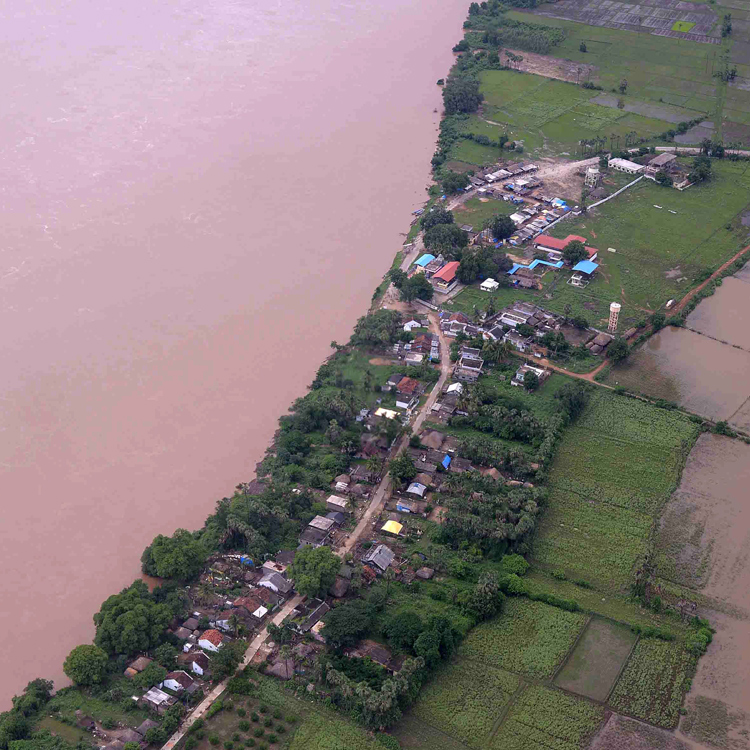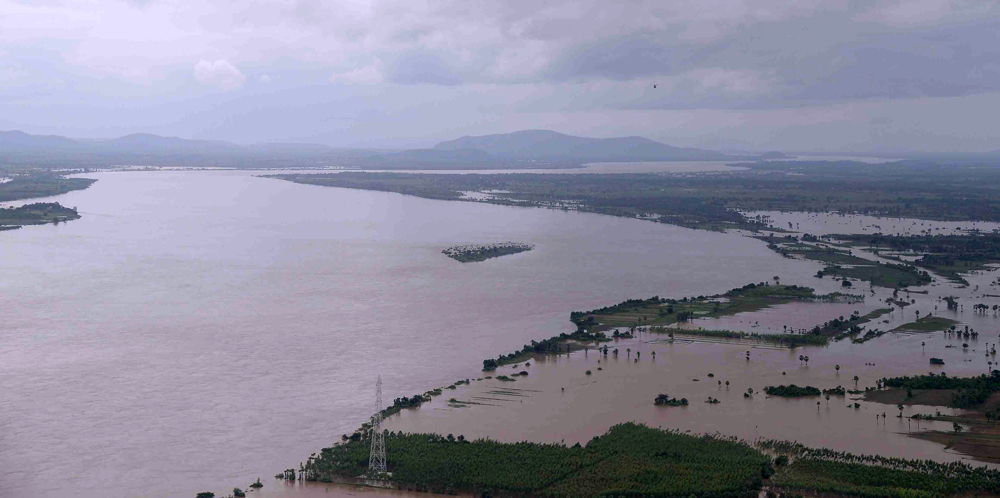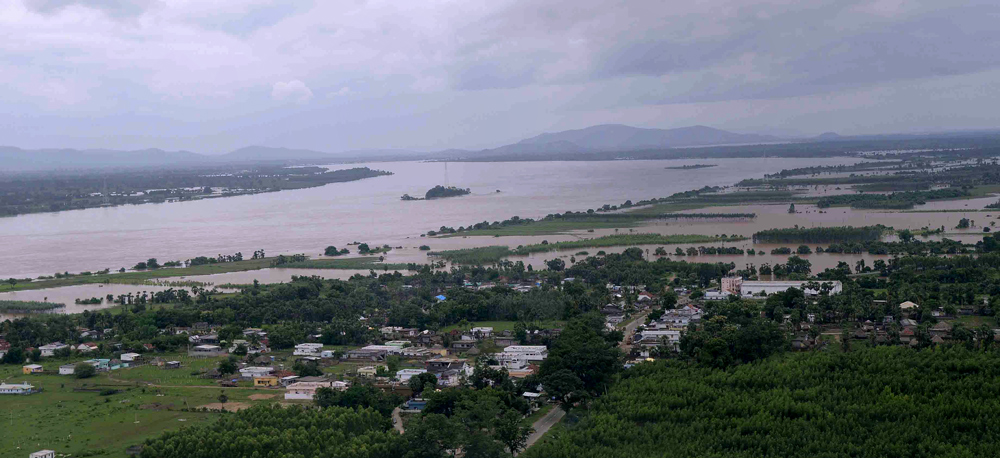PM's address at the ASSOCHAM Annual General Meeting
“I am delighted to be with you today to inaugurate the ASSOCHAM’s AGM, 2013. ASSOCHAM has, over the years, provided valuable inputs from time to time for shaping our policies for economic and industrial growth. I would like to compliment Shri Rajkumar Dhoot and all his colleagues for their work and I am happy to share my thoughts with you today.
Let me begin by stating upfront that we, like most other countries, are going through a difficult period. I know that business is deeply concerned about the slowdown in our economy. It is looking to the government to bring the economy back to a higher growth path. This, I believe, is a legitimate expectation and is also upper most in our mind.
When things are going well, government should interfere as little as possible. When things are going bad, as they seem to be at present, it is the responsibility of the Government to become more pro-active.
The most immediate cause of worry is the recent volatility in foreign exchange markets. Much of this was due to global markets reacting to the likelihood of a withdrawal of Quantitative Easing III by the US Federal Reserve Bank. Large volumes of funds were withdrawn from emerging markets and there was a depreciation in many emerging market countries including Turkey, Brazil and South Africa.
We too experienced a significant depreciation in the exchange value of the rupee. In our case, it was perhaps exacerbated by the fact that our current account deficit in the balance of payment had increased to 4.7 percent of GDP in 2012-13.
I can assure you, we are committed to bringing the current account deficit under control by addressing both the demand side and the supply side of the problem. On the demand side, we need to reduce the demand for gold and the demand for petroleum products – the two biggest components of our trade deficit.
We have taken measures to control the demand for gold and I am happy to say they have had some affect. Gold imports declined sharply in June, and I hope they will stay at normal levels from now on.
On petroleum products, we began a process of correcting the prices of petroleum products last year. The gradual correction that was taking place in diesel prices had reduced the gap in under-recoveries from almost Rs 13 per litre to less than Rs 2 per litre. Unfortunately, some of this has been undone by the depreciation of the Rupee. However, our policy of adjusting prices to progressively eliminate under-recoveries remains in place.
On the supply side, we need to push our exports. The depreciation in the rupee will help. Of course, there is a time lag before this benefit will be felt in terms of export volumes, but orders being booked from now on would certainly benefit. We are also trying to remove the constraints in the export of iron and other ores which saw a considerable decline during the last one year.
The Reserve Bank has done its bit to stabilise market expectations. Initially it injected dollars into the market. This helped to some extent. More recently, it took additional steps to raise short term interest rates. These steps are not meant to signal an increase in the long term interest rates. They are designed to contain speculative pressure on the currency. Once these short term pressures have been contained, as I expect they will be, the Reserve Bank can even consider reversing these pressures.
Looking ahead, the rupee depreciation will help Indian industry to compete effectively with other countries, both in export markets and against their imports in our markets.
I hope industry is thinking seriously of how to become more competitive. It is because we are confident that it can that we have entered into Comprehensive Economic Partnership Agreement with the ASEAN countries as well as the Republic of Korea. We are hoping to conclude a similar agreement with the European Union soon.
Ideally we should bring the current account deficit down to 2.5 percent of our GDP. It is clearly not possible to do this in one year, but I expect that the current account deficit in 2013-14 will be much lower than the 4.7 percent level recorded last year. It will decline further next year. We will use all policy instruments available – fiscal, monetary and supply side interventions to ensure that the Current Account Deficit declines further over time.
Looking at the medium term prospects, I feel we can and we should remain optimistic. The basic fundamentals of our economy are sound and healthy. We have been taking all possible measures to correct imbalances on the macro front.
The fiscal deficit, which is the accumulated effect of the fiscal stimulus given in the past, had expanded and it needs to be reduced. The Finance Minister has targeted fiscal deficit of 4.8 percent of GDP in the year 2013-14 and announced continuing reductions of about half a percentage each year subsequently, up to 2016-17. We are determined to meet the target for this year.
We also need to take steps that will revive the momentum of investment. A major focus of concern in the past few months is that many projects have been held up for various reasons. We have seen a very strong expansion in power generation capacity but coal supply became a problem. We have now resolved this problem and the fuel supply agreements are being signed which will ensure that all plants that are commissioned by 2015 will have adequate supplies of coal consisting of a mix of domestic and imported coal.
Many projects have been held up for lack of regulatory approvals. These are being expedited. A separate cell has been set up in the Cabinet Secretariat recently to identify big ticket projects, both in the public and private sectors, and to see how they can be helped through various hurdles.
Infrastructure is absolutely critical for our medium term growth prospects and we are monitoring progress in this area on a quarterly basis. Several initiatives are being pursued.
• The Government has plans for setting up two major ports in Andhra Pradesh and in West Bengal.
• New airports are envisaged to come up in Navi Mumbai, Juhu, Goa, Pune and Kannur.
• At 50 other locations, new small airports are being built.
• Major railway projects, including an elevated rail corridor for Mumbai, are being processed.
• The feasibility of a bullet train from Mumbai to Ahmedabad is being studied.
• Industrial Corridors from Delhi to Mumbai, Amritsar to Kolkata and Chennai to Bangalore are being considered.
All these initiatives are being monitored at the highest level with a sense of urgency.
There are several other reforms that have been undertaken over the last one year.
• The Banking Laws have been amended to raise the cap on voting.
• Subsidy reform and rationalisation has started in full force. Direct Benefit Transfer Scheme is being rolled out across the country to reduce both wastage and corruption in delivery of public service.
• Foreign Direct Investment has been liberalised in single brand retail, multi-brand retail, civil aviation and power exchanges. More FDI reforms are on the anvil as has been reported.
• A new bank licensing policy has been announced and new licences are soon to be awarded.
• GAAR, which has been a subject matter of considerable concern to industry, has been postponed by 2 years and there is greater clarity on the rules.
• Taxation issues of the IT sector and of development centres have been resolved based on the Rangachary Committee report.
• Public Sector investment has been fast-tracked and I have estimated that over Rs 120,000 crores has been invested by major Public Sector Units last year.
• Infrastructure Debt Funds have been rolled out.
• Sugar has been fully decontrolled.
• Railways have corrected their fares for the first time in a decade.
• Construction has begun on the Dedicated Freight Corridor.
• The investment policy for urea has been approved.
• Gas pricing has been corrected to reflect market realities better.
• Procedural improvements have been made in the road sector to improve the economic viability of projects.
I could go on, but my purpose was only to show that we have acted on several fronts. We will persevere with these initiatives and I hope that their impact will be felt in the second half of this year.
I would not like to make a forecast of what our growth will be in the year 2013-14. The IMF has recently reduced its earlier projection of growth rates for all countries including India, for 2013. We had targeted 6.5 percent growth at the time the Budget was presented. But it looks as if it will be lower than that.
Industrial growth has not yet recovered. However, I am happy to say that agriculture looks well set to show a good performance. In fact, one of the important achievements of our Government is that agricultural performance has improved considerably. In the Tenth Plan period agriculture grew at 2.4 percent. In the Eleventh Plan period it grew at the rate 3.6 percent. In the Twelfth Plan we have targeted 4 percent growth for our agricultural sector. I am hopeful that the current year, with the rains being plentiful thus far, agriculture will do well. This will help revive demand in rural areas which will contribute to stronger industrial performance in due course.
I must emphasise that it is not the exact growth number for 2013-14 that matters. What is important is that the economy should turn around from 5 percent achieved last year. There is a very good chance that we can achieve that with good agricultural performance and the effect of the various actions we are taking on infrastructure.
Thereafter we will try to accelerate to higher grounds in 2014-15.
Before concluding, let me address the issue of UPA Government’s performance. Our political critics focus on the experience of one bad year. This makes for good television but it is a very distorted picture. I invite you to consider the following.
• The average growth rate in the 8 years of the UPA from 2004-05 to 2012-13 was 8.2 percent per annum. This is much better than the 5.7 percent reached in the previous 8 years.
• I have already mentioned that agriculture did much better in the Eleventh Plan than in the Tenth Plan. This is reflected in real per capita rural consumption rising at 2.9 percent per year between 2004-05 and 2011-12 compared with only one percent between 1993-94 and 2004-05.
• Rural real wages have also risen much faster (6.8 percent per year in the 11th Plan as compared to an average of 1.1 percent per year in the ten years preceding it).
• The percentage of population below the poverty line declined at 0.75 percentage points per year before our government came to office in 2004-05. It has fallen more than 2 percentage points per year between 2004-05 and 2011-12.
I think this is a record that any government can be proud of. I agree we have had one bad year. I assure you we will get out of it.
I have touched upon some of the issues that I know concern the captains of industry and have talked about the areas where action needs to be taken. I assure you we will leave no stone unturned to ensure that our economy rebounds. I appeal to each one of you not to be overcome by negative sentiments. We should stay the course, and work together to achieve our collective national goals.
With these words, I wish this conference and the ASSOCHAM all success.”
Thank You.

















